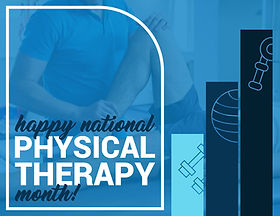Don’t Let Injuries Ruin Your Summer
- Arthritis & Sports
- Jun 29, 2018
- 4 min read
Updated: May 26, 2021

Summer is a great time for kids and adults alike to have some fun. However, summer is a peak time for injuries – whether it’s because of jumping back into a sport after a dormant winter or trying to have too much fun when it’s too hot. Luckily, there are things you can do to avoid getting hurt.
Common Danger Hot Spots
Although summer is a great time for fun, it is also filled with risks for injuries like burns, scrapes, and bruises. The old adage that most injuries happen in and around the home is true – the CDC reports that more than three million children under the age of 15 experience accidents in and around the home every year. But just because you’re away on vacation doesn’t mean you’re completely safe. Trips to the pool and ocean have slipping and drowning hazards, hiking trips can lead to nasty spills and falls – even leisurely picnics can result in injuries when field games are involved.
Injuries at Home
While the beautiful weather beacons kids to go play outside, yard work and home repairs have a way of drawing adults out as well. Kids can even get the adults involved in the action, playing games of tag or hitting the slip-n-slide. All of these activities can lead to injuries that range from very serious to merely uncomfortable (thank you, slip-n-slide).
Since most child-related injuries are predictable and preventable, education and supervision are the most important steps in preventing these kinds of injuries. For adults, being mindful of your body during both complex and simple outdoor tasks is important – even pulling weeds can leave you with back pain and pulled muscles.
Injuries On The Field
One of the biggest causes of injury in every sport is a lack of conditioning. While the warm weather lures us back onto the field or the court, the long winter hibernating indoors can leave our bodies physically back at square one. So while you may feel like you haven’t missed a step, your body is more susceptible to injuries with the 3 Ts – too much, too soon, too fast.
To prevent these kinds of injuries, it’s important to ease your way back into sports and activities you haven’t played in a while. It takes time to build your strength and endurance back to where it was before, so easing your way back in is key. Consider taking a few lessons or participating in a clinic before getting right back in, and slowly progress how long and how intensely you play your sport.
Flying (And Playing) Too Close To The Sun
You’re outside playing, feeling the warmth from the sun on your skin. You’re running around, playing your heart out, then you start feeling thirsty. And sluggish. And hot. These are some of the signs of heat exhaustion, which usually goes hand-in-hand with dehydration. Without proper intervention, heat exhaustion can progress to heatstroke, which can damage the brain and other vital organs (and can even cause death).
Many people who get heat exposure illnesses don’t realize it until it’s too late, eventually ending up in the hospital. It’s very important for you to check yourself and your teammates for signs of heat stress, including: cold, clammy skin; bright red skin; fatigue and fainting; confusion and dizziness; and a lack of sweating. If you spot these symptoms, it's essential to immediately get out of the heat and rest. Wearing light-colored, moisture-wicking clothing can help your skin breath and prevents you from overheating, and drinking plenty of fluids can help keep your body in check. And speaking of drinking fluids…
While not as serious, dehydration can have serious consequences, including vomiting and fainting. Proper hydration is very important when being active, but even more so when you’re playing outside – your body produces sweat so that, as it evaporates, it cools down the skin. Being mindful of how hydrated you are is key no matter where you’re exercising, but it's even more important to follow these rules while playing outside:
Drink 15-20 ounces of water 2-3 hours before exercising
Drink 8-10 ounces of water right before exercising
Drink 8-10 ounces of water every 10-15 minutes of exercising
If exercising for longer than 45 minutes, drink 8-10 ounces of a sports drink every 15-30 minutes
I’m Injured – What Now?
Some injuries are very apparent (think broken bones and twisted ankles) but some aren’t as obvious. It’s very important to listen to your body and pay attention to how you feel both during and after activities. Because injuries can easily get worse over time, anything other than muscle strains should be checked out by a physician.
Sidelined by a sports injury or orthopaedic condition? Our award-winning fellowship-trained providers are here to help you return to your active life! We invite you to call us at 703.444.5000 or click here to request an appointment with one of the physicians at Arthritis & Sports. To stay up-to-date on the latest news and tips from us, be sure to follow us on Facebook and Instagram, and sign up for our monthly newsletter for even more information sent straight to your inbox!


























